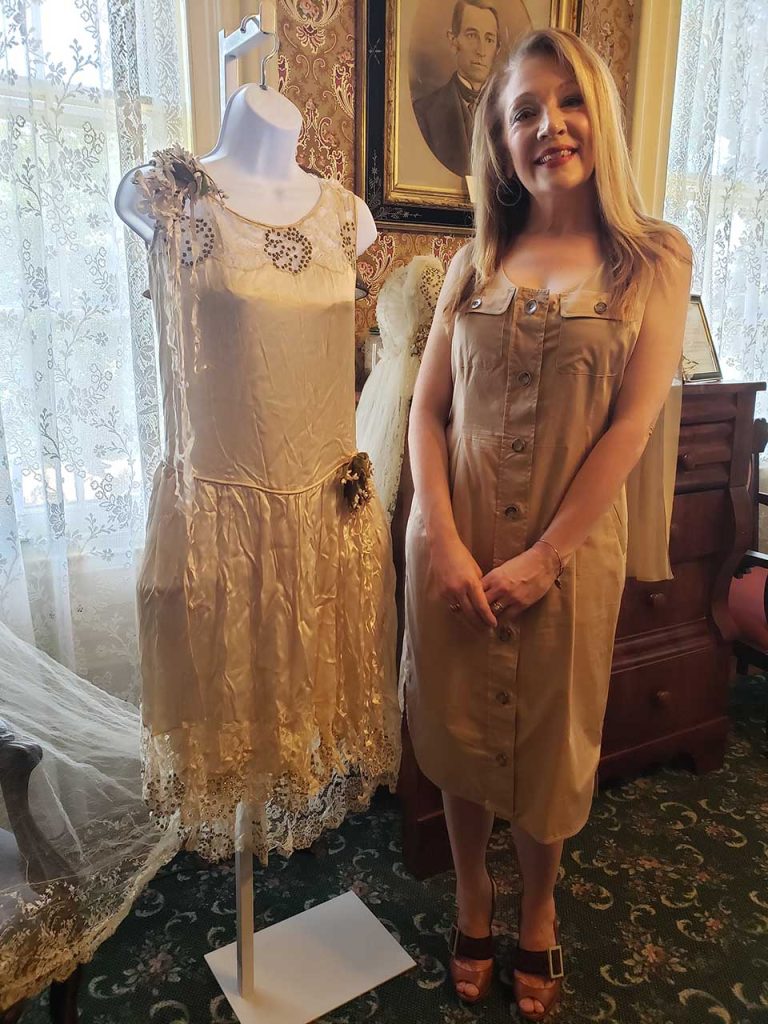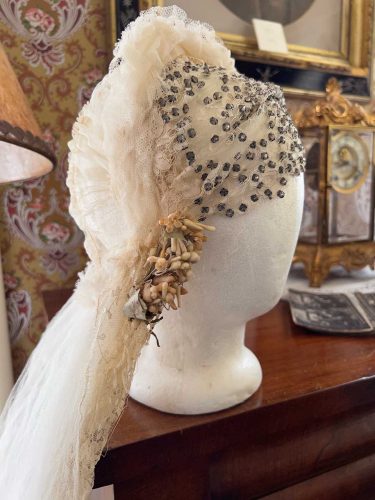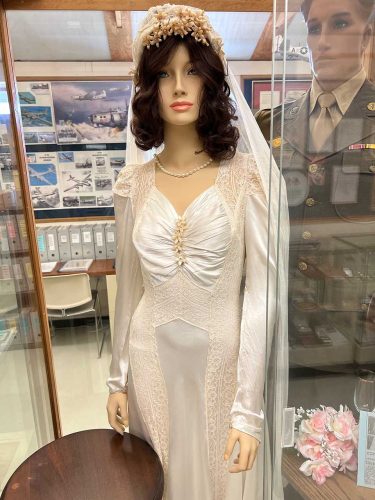Preserving Fashion History in Cumberland County

 Historical societies in Cumberland County as well as the Millville Army Airfield Museum have preserved historic fashions. The local chapter of the Daughters of the American Revolution (Greenwich Tea Burning Chapter) recently held its annual meeting at the Mauricetown Historical Society. Chapter members went on a guided tour led by Society Curator Kim LaCroce.
Historical societies in Cumberland County as well as the Millville Army Airfield Museum have preserved historic fashions. The local chapter of the Daughters of the American Revolution (Greenwich Tea Burning Chapter) recently held its annual meeting at the Mauricetown Historical Society. Chapter members went on a guided tour led by Society Curator Kim LaCroce.
Currently, the Captain Edward Compton House Museum, an Italianate Victorian home (1864), has an exhibit entitled “A Century of Weddings.” The oldest gown is from the 1880s. One wedding gown and veil in particular worn by Matilda Fabrizio Porreca is a stunning example of 1926 fashion and changing attitudes for women. The silken gown is short with panniers (hoops) supporting the gown on each hip. The bridal veil is 10 feet long and attached to a cloche-style headpiece studded with sparkling rhinestones and with a delicate chiffon ruffle traversing the crown. The bridal gowns will be on display until the end of June. Contact mauricetownhistoricalsociety.org.
 The Cumberland County Historical Society in Greenwich has 18th- and 19th-century clothing on display in the Gibbon House (1730). When touring the first floor, docent Tia Antonelli states that one can see a dress and slippers having belonged to Christiana Clinton Beatty, an Irish immigrant who lived in the 1700s. It is shown along with a waistcoat and handmade shirt with long sleeves and ruffled collar (1860) that belonged to Dr. Enoch Fithian (1792-1892). The second floor houses more clothing displays and includes a children’s room. Contact [email protected].
The Cumberland County Historical Society in Greenwich has 18th- and 19th-century clothing on display in the Gibbon House (1730). When touring the first floor, docent Tia Antonelli states that one can see a dress and slippers having belonged to Christiana Clinton Beatty, an Irish immigrant who lived in the 1700s. It is shown along with a waistcoat and handmade shirt with long sleeves and ruffled collar (1860) that belonged to Dr. Enoch Fithian (1792-1892). The second floor houses more clothing displays and includes a children’s room. Contact [email protected].
The Millville Army Air Field Museum preserves history of the army air field designated as “America’s First Defense Airport” (1941) during WWII. Along with the extensive collection of aviation-related photographs and military artifacts, many stories surrounding the WWII era are preserved there. In 1943 at a USO Halloween party held at the Knight’s of Columbus Hall in Millville, Miss Madeline Milita, a USO girl, met Sgt. Bob Goldstine. They were married in 1944. Her floor-length wedding gown of satin and lace can be seen and admired in the museum today. Orange blossoms, a traditional symbol of purity, good luck and eternal love, adorn the center of the bodice and the bridal veil. Contact [email protected].
Two more area museums with bridal fashions will be presented next week.









